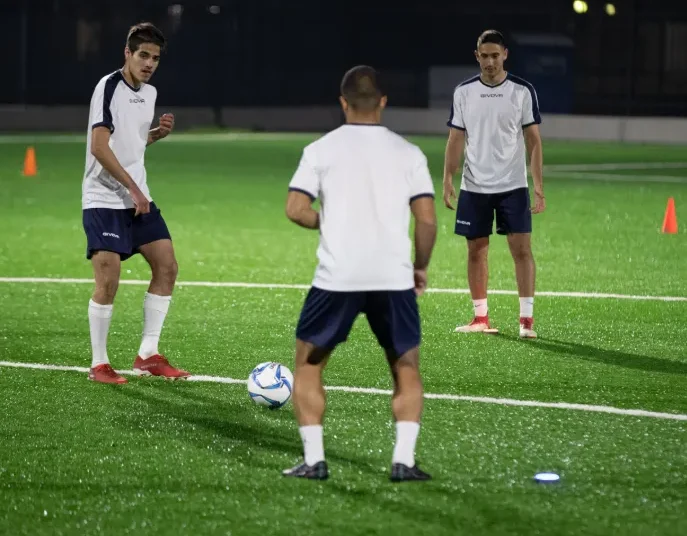Soccer, or football as it’s known in many parts of the world, is the most popular sport globally, with millions of players across all levels. One of the key reasons for its popularity is its simplicity — all you need is a ball, and you’re ready to play. But while soccer doesn’t require a lot of equipment, mastering the essential skills is crucial to excelling at the game.
Key Soccer Skills Every Beginner Needs to Know
To truly succeed in soccer, there are three fundamental skills every player must master:
Dribbling
Passing
Shooting
These basic skills are the building blocks of soccer. Without them, playing the game becomes a challenge. This blog will introduce three effective drills to help beginners sharpen these core skills, and the best part is that they can practice on their own, making it easy to train anytime!
1. Lane Dribbling Drill
Dribbling is at the heart of soccer, as it’s how players move the ball around the field. Good dribblers don’t just run with the ball — they control it, change directions quickly, and navigate through defenders. The lane dribbling drill helps improve ball control, speed, and agility.
How to Set Up Lane Dribbling:
Set up two rows of cones to form a “lane” for the player to dribble through.
The width of the lane can vary depending on skill level. Beginners should use wider spacing, while more advanced players can use narrower lanes to focus on precision.
Lane Dribbling Variations:
Dribble through the lane as fast as possible while maintaining control of the ball. The number of touches or which foot you use isn’t crucial as long as you keep control.
Try dribbling through the lane with just one foot, ensuring tight control and consistency with that foot.
Dribble in a zigzag pattern through the lane at a 45-degree angle. This variation focuses on speed and changing directions.
As you improve, narrow the lane to make it more challenging and demand better control.
2. Wall Passing Drill
While dribbling is key, there are times when passing the ball is the better option. Passing is essential in soccer for both maintaining possession and setting up offensive plays. The wall passing drill helps improve both passing accuracy and receiving the ball.
How to Perform Wall Passing:
Find a flat wall with a solid surface. Stand about 5 to 10 feet from it.
Pass the ball into the wall and then control it when it bounces back, catching it with your foot.
Wall Passing Variations:
Running Wall Passing: Start at one end of the wall and pass the ball at an angle. As the ball bounces off the wall, move to catch it. This simulates real-game movement and improves anticipation.
Target Wall Passing: Mark spots on the wall (or find natural marks, like cracks). Aim to pass the ball to those spots and receive it back. This helps improve precision.
Vary the Distance and Speed: Adjust the distance and the speed of the pass for different situations, making it a versatile drill for various game scenarios.
3. Turn and Shoot Drill
Scoring goals is the ultimate objective in soccer, and this drill helps players practice shooting under pressure. It simulates a real game scenario where a player must quickly turn and shoot at the goal with little time to adjust.
How to Perform the Turn and Shoot Drill:
Choose a spot on the field to stand, depending on the shooting angle you want to practice.
Stand with your back to the goal, and place the ball slightly in front of you.
Set a timer for 10-15 seconds to add pressure.
When the timer goes off, roll the ball toward yourself with one foot, take control, quickly turn toward the goal, and shoot.
This drill mimics real-game situations where there’s no time to set up the shot — you need to act fast and with precision.
Conclusion
Mastering these three beginner soccer drills will significantly enhance your ball control, passing accuracy, and shooting skills. With consistent practice, you’ll become a more effective and confident player on the field. The key to success in soccer is continuous improvement, and by focusing on these essential skills, you’ll set yourself up for success.
















